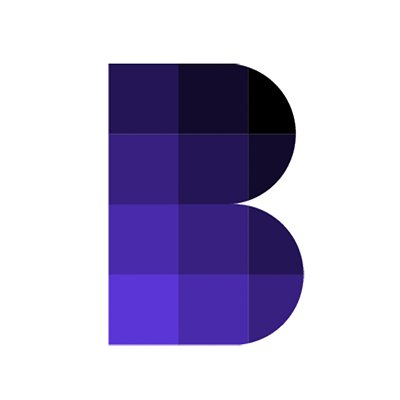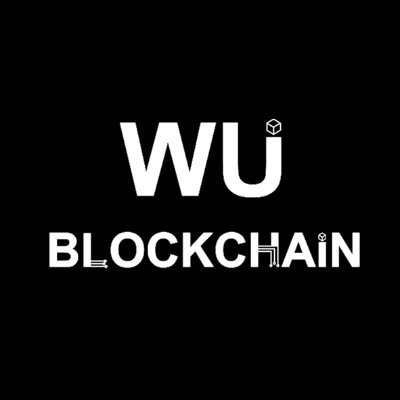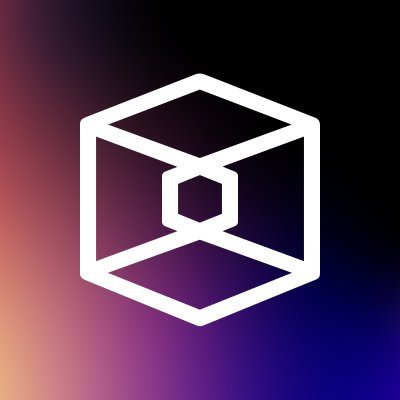
Hedera priceHBAR
HBAR/USD price calculator
Hedera market Info
Live Hedera price today in USD
The cryptocurrency market is abuzz on October 28, 2025, with significant regulatory shifts, notable price movements in major assets, and key industry events unfolding. The overarching sentiment points to a blend of cautious optimism and strategic development, as the sector continues to mature amid evolving global frameworks and technological advancements.
Regulatory Landscape Takes Center Stage
Regulatory clarity remains a dominant theme in the crypto space. The Financial Stability Board (FSB) and the International Organisation of Securities Commissions (IOSCO) recently published two reports on October 16, 2025, assessing the implementation of their recommendations for crypto-asset and stablecoin activities. The reports highlighted that while some progress has been made, implementation remains slow and fragmented globally, emphasizing the need for more consistent and effective regulatory responses to prevent arbitrage and ensure market integrity. [1]
In the United Kingdom, new draft legislation, the Financial Services and Markets Act 2000 (Cryptoassets) Order 2025, published on April 29, 2025, is set to bring cryptoassets formally within the UK's regulatory scope. This legislation introduces new regulated activities, including the operation of crypto trading platforms and stablecoin issuance, and establishes standards for transparency and consumer protection. [2] The Financial Conduct Authority (FCA) has also released consultation papers and a 'Crypto Roadmap,' with significant changes expected to take effect in 2026. Notably, the FCA has lifted its ban on certain Bitcoin-based Exchange-Traded Products (ETPs), paving the way for products like BlackRock’s ETP launch. [2]
Across the Atlantic, US Senate members convened a private roundtable with leading cryptocurrency executives on October 22, 2025, to discuss comprehensive market regulation. Key policy areas addressed included clearer jurisdictional boundaries between regulatory bodies, a federal framework for stablecoins, enhanced anti-money laundering measures, and robust investor protections. [4] Meanwhile, the Swiss Bitcoin-only application, Relai, achieved a significant milestone by obtaining a MiCA license from the French Financial Markets Authority (AMF) today, October 28, 2025. This authorization allows Relai to expand its regulated Bitcoin services across the European Union, enhancing accessibility and transparency for users. [20]
Bitcoin and Ethereum Show Resilience and Bullish Signals
Today, Bitcoin (BTC) is demonstrating bullish momentum, pushing towards the $115,000 region. This surge follows recent outflows and is attributed to easing selling pressure, growing bullish sentiment, and increased accumulation by investors. Over 7 million Bitcoin returned to profitability in the last 24 hours, underscoring renewed investor confidence. [8, 31] Analysts are optimistic, with some projecting Bitcoin could reach $120,000 and potentially surpass its all-time high of $126,000-$130,000 by year-end, possibly extending to $150,000 as 2025 approaches. [9, 26, 31]
Ethereum (ETH) is also exhibiting strong performance, outperforming Bitcoin with a 6% increase and trading above $4,200. [22, 23, 31] Market observers note a 'bull flag' pattern, suggesting potential for ETH to reach $5,000. [22] Institutional demand and continued ETF inflows are contributing factors, with 'whales and sharks' reportedly accumulating ETH, indicating improving confidence among larger accounts. [13, 22] The upcoming Federal Reserve meeting on October 28-29, with an anticipated 25 basis points rate cut, is widely expected to act as a significant catalyst, boosting risk assets across the board, including cryptocurrencies. [9, 21, 22, 27, 31]
Altcoin Market Dynamics
Amidst the broader market movements, several altcoins are drawing attention. Digitap ($TAP), an omnibank offering a Visa card for both crypto and fiat, has successfully raised over $1 million in its presale, with some analysts forecasting significant growth. Hyperliquid (HYPE) recorded a 26% price surge, supported by its treasury firm's plan to raise $1 billion. Cardano (ADA) is also under the spotlight, with investors anticipating a potential ETF approval. [3]
Chainlink (LINK) is showing signs of a potential breakout, driven by increased on-chain activity and accumulation by large holders, solidifying its role as crucial infrastructure in decentralized finance. [16, 17] In a notable development, Vultisig's native token, $VULT, is making its debut today, October 28, 2025, with a listing on the Kraken exchange. [14, 34] Furthermore, Nasdaq-listed EtherZilla (ETHZilla), a corporate investor in Ethereum, executed a $40 million ETH sale to fund a share buyback program, aiming to enhance shareholder value. [29]
Key Industry Events and NFT Market Evolution
The cryptocurrency calendar highlights the Blockchain Life 2025 forum, commencing today, October 28-29, in Dubai. This significant event is set to host over 15,000 attendees, bringing together industry pioneers and leaders to discuss the future of Web3, cryptocurrencies, and mining. [7, 19, 24] Also, a crucial technical milestone for Ethereum is set for today, October 28, as its Fusaka hard fork upgrade undergoes its final dry run on the Hoodi testnet, with mainnet deployment projected for early December. [13, 21, 22]
The NFT market, after experiencing a volatile period in early October that saw a dip in market capitalization due to geopolitical tensions, has demonstrated a resilient rebound. The market's recovery signals a growing focus on utility and long-term value over speculative gains, with OpenSea evolving into a comprehensive crypto trading aggregator. [30] The market is shifting towards projects with clear roadmaps and demonstrable real-world applications, with projections estimating the NFT sector's market capitalization to reach $49 billion in 2025. [30]
In conclusion, October 28, 2025, marks a dynamic period for the crypto market, characterized by advancing regulatory discussions, bullish price movements for leading assets, and continued innovation across the altcoin and NFT sectors. The confluence of these factors underscores a market that is actively building foundational elements for sustained growth and broader adoption.
Do you think the price of Hedera will rise or fall today?
Now that you know the price of Hedera today, here's what else you can explore:
How to buy Hedera (HBAR)?How to sell Hedera (HBAR)?What is Hedera (HBAR)What would have happened if you had bought Hedera (HBAR)?What is the Hedera (HBAR) price prediction for this year, 2030, and 2050?Where can I download Hedera (HBAR) historical price data?What are the prices of similar cryptocurrencies today?Want to get cryptocurrencies instantly?
Buy cryptocurrencies directly with a credit card.Trade various cryptocurrencies on the spot platform for arbitrage.Hedera price prediction
When is a good time to buy HBAR? Should I buy or sell HBAR now?
What will the price of HBAR be in 2026?
In 2026, based on a +5% annual growth rate forecast, the price of Hedera(HBAR) is expected to reach $0.2029; based on the predicted price for this year, the cumulative return on investment of investing and holding Hedera until the end of 2026 will reach +5%. For more details, check out the Hedera price predictions for 2025, 2026, 2030-2050.What will the price of HBAR be in 2030?
About Hedera (HBAR)
About Hedera
Hedera (HBAR) is a public network that leverages the hashgraph consensus algorithm to enable fast, fair, and secure transactions. Unlike traditional blockchain">blockchain technology, Hedera doesn't form a single chain of blocks but instead weaves all transactions into a single whole, ensuring that no data is discarded. This innovative approach allows Hedera to process hundreds of thousands of transactions per second, with consensus latency measured in seconds, making it one of the most efficient and scalable platforms in the distributed ledger space.
The vision of Hedera is to create a trusted, secure, and empowered digital future for all. Its mission revolves around building a safe and private digital community where users can interact with confidence. Hedera aims to provide a platform where individuals can work, play, buy, sell, create, and engage socially with safety and privacy. The emphasis on trust, security, and empowerment reflects Hedera's commitment to fostering a positive digital environment for all users.
Hedera was founded in 2017 by American technologists Leemon Baird and Mance Harmon, who also launched Swirlds Labs. Both founders possess extensive experience in the software development and tech industry, with expertise spanning AI, security, defense, identity, and more. As of August 2023, the Hedera network processes 66,670,036 transactions per day, with an average transaction time of 5.64 seconds.
Resources
Whitepaper: https://hedera.com/hh_whitepaper_v2.1-20200815.pdf
Official website: https://hedera.com/
How Does Hedera Work
Hedera leverages the hashgraph consensus algorithm to enable a decentralized network capable of processing hundreds of thousands of transactions per second. Unlike traditional blockchain, where blocks can be discarded, Hedera incorporates every container of transactions into the ledger, ensuring efficiency and fairness. The system's asynchronous Byzantine Fault Tolerance (aBFT) provides robust security, including resilience to Distributed Denial of Service (DDoS) attacks, and ensures fair access and ordering of transactions.
The governance of Hedera is overseen by a council of up to 39 leading global enterprises, reflecting a diverse range of industries and geographies. This decentralized governance structure ensures that no single member has control, and no small group can exert undue influence. Stability is further ensured through technical controls that validate the pedigree of the ledger and legal controls that prevent unauthorized forks, providing a stable platform for mainstream adoption.
Hedera also emphasizes regulatory compliance, with features like controlled mutability of the network state and the ability to attach additional data to transactions. These features enable compliance with regulations like GDPR and facilitate Know Your Customer (KYC) and Anti Money Laundering (AML) checks. While not open source, Hedera's code is publicly available for review, ensuring transparency and stability through the defensive use of hashgraph software patents.
What is HBAR Token?
HBAR is the native token of Hedera, used to power the network and enable various functionalities. HBAR has a hard cap maximum supply of 50 billion. At the moment, there are 38.24 billion HBAR tokens in circulation.
- Transaction Fees: HBAR is used to pay for transaction fees on the network, ensuring that users contribute to the network's maintenance. The cost per HBAR transaction to be very small, around $0.0001 USD
- Network Security: HBAR tokens are staked by nodes to secure the network, providing incentives for honest behavior.
- Smart Contracts and Decentralized Applications (DApps): Developers can use HBAR to build and deploy smart contracts and DApps on the Hedera network.
- Governance: HBAR also plays a role in governance, allowing token holders to have a say in network decisions.
Conclusion
Hedera represents a significant evolution in the field of distributed ledger technology. By leveraging the hashgraph algorithm, it offers unparalleled performance, security, and fairness. The HBAR token, as an integral part of the ecosystem, facilitates transactions, security, and development on the platform.
It's important to note that like any other cryptocurrencies, Hedera carries its own risks and it's always wise to do your own research and exercise caution while investing.
Hedera (HBAR) Project Analysis: An Enterprise-Grade DLT for the Future
Hedera (HBAR) presents itself as an enterprise-grade public distributed ledger technology (DLT) designed to overcome the limitations of traditional blockchains, focusing on speed, security, and scalability for real-world applications. Unlike many cryptocurrencies that leverage a conventional blockchain architecture, Hedera is built upon the innovative Hashgraph consensus algorithm, offering a distinct approach to decentralized networks.
Core Technology: Hashgraph Consensus
At the heart of Hedera lies the Hashgraph consensus mechanism, a proprietary asynchronous Byzantine Fault Tolerant (aBFT) algorithm created by Dr. Leemon Baird, Hedera's co-founder and Chief Scientist. This technology utilizes a 'gossip about gossip' protocol and virtual voting to achieve consensus. The result is a network capable of processing over 10,000 transactions per second (TPS) with near-instant finality, typically settling transactions within 3 to 5 seconds. This performance dramatically surpasses that of many legacy blockchain systems. Furthermore, Hedera is recognized for its energy efficiency, operating as a carbon-negative network, consuming significantly less energy per transaction than many alternatives.
Performance and Cost Efficiency
Hedera distinguishes itself with predictable and remarkably low transaction fees. The average transaction cost is approximately $0.001 USD, paid in HBAR, and these fees are designed to remain stable. This cost-effectiveness, combined with high throughput and rapid finality, makes Hedera particularly suitable for high-volume use cases such as micropayments, data logging, and enterprise applications requiring efficient and reliable transaction processing.
Governance Model: The Hedera Governing Council
One of Hedera's most unique aspects is its governance structure. The network is overseen by the Hedera Governing Council, an independent body composed of up to 39 diverse, global organizations spanning various industries and geographies. Current and past council members include prominent entities such as Google, IBM, LG, Dell Technologies, and ServiceNow. This council is responsible for guiding the network's direction, codebase updates, network fees, and treasury management. While initially operating with a permissioned node model run by council members, Hedera has a roadmap to progressively decentralize towards a permissionless network, allowing broader participation in node operation and staking while maintaining enterprise-grade stability and regulatory compliance. The Council aims to balance robust decentralization with trusted decision-making, ensuring stability and a no-fork guarantee for end-users and application owners.
HBAR Tokenomics and Utility
The native cryptocurrency of the Hedera network is HBAR. The HBAR token serves a dual purpose: it acts as the utility token that powers various network services and is also integral to securing the network. Users pay transaction fees in HBAR for network operations such as smart contract execution, file storage, and token transfers. HBAR also plays a role in Hedera's Proof-of-Stake (PoS) security model, where users can stake their tokens to contribute to network security and earn rewards. The total supply of HBAR is fixed at 50 billion tokens, with a controlled release schedule managed by the Governing Council to ensure long-term sustainability and mitigate inflationary pressures.
Use Cases and Ecosystem Growth
Hedera's architecture is designed to support a broad spectrum of decentralized applications (dApps) and enterprise solutions. Its ecosystem includes projects across decentralized finance (DeFi), non-fungible tokens (NFTs), the creator economy, supply chain management, and digital identity. Noteworthy applications and partnerships demonstrate its versatility: SaucerSwap offers DeFi services, SentX provides NFT functionalities, and Hashport facilitates cross-network asset interoperability. Enterprises leverage Hedera for diverse needs, from sustainable NFT marketplaces (LG) to multi-party workflow productivity (ServiceNow) and managing universal manufacturer offer promotions (The Coupon Bureau). The platform's capabilities extend to supporting stablecoins for real-time payment solutions and robust tokenization services for various digital assets.
Security and Roadmap
Hedera's security model is anchored in its aBFT Hashgraph consensus, which mathematically guarantees transaction finality and protection against common attacks. The platform continuously enhances its security, as evidenced by swift responses to reported vulnerabilities and ongoing updates to its smart contract service security. Looking ahead, Hedera's roadmap emphasizes enhancing the developer experience, improving Ethereum Virtual Machine (EVM) compatibility, advancing modular local node testing, and introducing features like revenue-generating topic IDs. Strategic partnerships with technology giants such as Nvidia, Intel, and Chainlink are also key to expanding its capabilities, particularly in areas like AI and tokenization. The long-term vision includes a gradual transition to a more permissionless network, fostering broader community participation while maintaining its commitment to enterprise-grade performance and security.
Challenges and Outlook
While Hedera offers compelling technological advantages, it faces the ongoing challenge of balancing its enterprise-centric model with broader retail adoption, a common hurdle for platforms not primarily driven by grassroots community development. The journey towards full decentralization, though planned, also remains a key area of focus and scrutiny. Despite these considerations, Hedera's strong fundamentals, unique technology, robust governance, and growing ecosystem of real-world use cases position it as a significant player in the evolving DLT landscape, attracting interest from both developers and large institutions.
Bitget Insights




HBAR/USD price calculator
HBAR resources
What can you do with cryptos like Hedera (HBAR)?
Deposit easily and withdraw quicklyBuy to grow, sell to profitTrade spot for arbitrageTrade futures for high risk and high returnEarn passive income with stable interest ratesTransfer assets with your Web3 walletWhat is Hedera and how does Hedera work?
Global Hedera prices
Buy more
FAQ
What is the current price of Hedera?
What is the 24 hour trading volume of Hedera?
What is the all-time high of Hedera?
Can I buy Hedera on Bitget?
Can I get a steady income from investing in Hedera?
Where can I buy Hedera with the lowest fee?
Related cryptocurrency prices
Prices of newly listed coins on Bitget
Hot promotions
Where can I buy Hedera (HBAR)?
Video section — quick verification, quick trading









